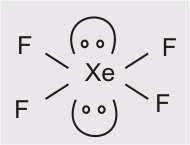-
Engineering and Architecture
Exams
Colleges
Predictors
Resources
-
Computer Application and IT
Quick Links
Colleges
-
Pharmacy
Colleges
Resources
-
Hospitality and Tourism
Colleges
Resources
Diploma Colleges
-
Competition
Other Exams
Resources
-
School
Exams
Top Schools
Products & Resources
-
Study Abroad
Top Countries
Resources
-
Arts, Commerce & Sciences
Exams
Colleges
Upcoming Events
Resources
-
Management and Business Administration
Colleges & Courses
Predictors
-
Learn
Law Preparation
MBA Preparation
Engineering Preparation
Medical Preparation
-
Online Courses and Certifications
Top Streams
Specializations
- Digital Marketing Certification Courses
- Cyber Security Certification Courses
- Artificial Intelligence Certification Courses
- Business Analytics Certification Courses
- Data Science Certification Courses
- Cloud Computing Certification Courses
- Machine Learning Certification Courses
- View All Certification Courses
Resources
-
Medicine and Allied Sciences
Colleges
Predictors
Resources
-
Law
Resources
Colleges
-
Animation and Design
Exams
Predictors & Articles
Colleges
Resources
-
Media, Mass Communication and Journalism
Colleges
Resources
-
Finance & Accounts
Top Courses & Careers
Colleges
Get Answers to all your Questions


(a) Give reasons :
(i) undergoes disproportionation reaction but
does not.
(ii) When reacts with excess of
,
is formed and not
.
(iii) Dioxygen is a gas while Sulphur is a solid at room temperature.
(b) Draw the structures of the following :
(i)
(ii)
Answers (1)
(a)
(i) undergoes disproportionation reaction but
does not. In
, the oxidation state of P is +5 therefore it can only get reduced but in
, it is +3 it can both get oxidized as well as reduced.
(ii) When reacts with excess of
,
is formed and not
as chlorine has vaccant d-orbitals and can show oxidation state of +3 and due to high electronegativity and absence of d - orbitals in F, it cannot show oxidation state other than -1. Along with the bigger size, Cl can accomodate three F atoms.
(iii) Dioxygen is a gas while Sulphur is a solid at room temperature due to small size, 2p orbitals of oxygen can overlap effectively to form multiple bonds. It exists as a gas due to weak Vander-Waals forces of attraction whereas sulphur have stronger Van-der waals forces exists as a Solid.
(b)
(i)

(ii)

Crack CUET with india's "Best Teachers"
- HD Video Lectures
- Unlimited Mock Tests
- Faculty Support



